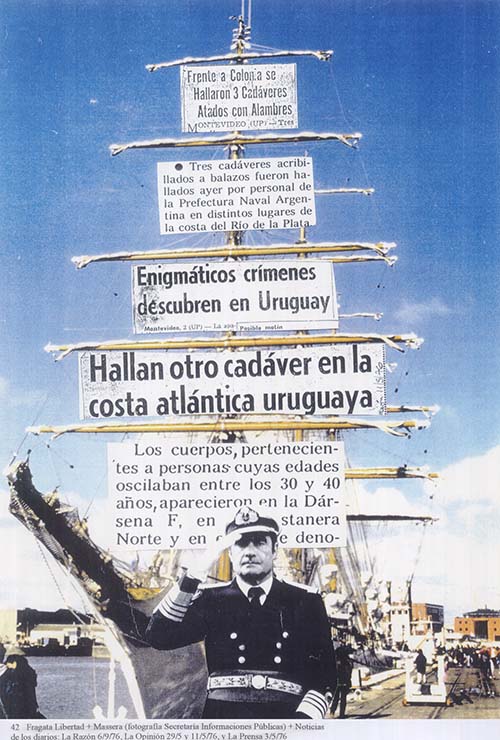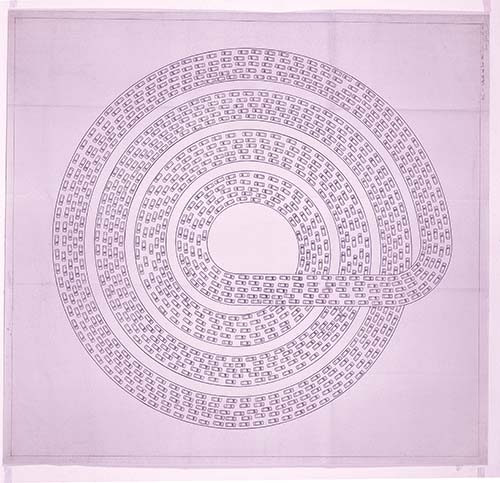Reproducing Them Infinitely
Looking to democratise the process of artistic production, Léon Ferrari issued a great number of unlimited and unsigned editions of his artworks from the 1970s onwards. Reproducing Them Infinitely references Ferrari's egalitarian understanding of art, as it is mirrored here, and makes it the focal point of this exhibition. In cooperation with the Fundación Augusto y León Ferrari – Arte y Acervo (FALFAA) and the Taller Humano selected graphics by Ferrari are made available that visitors can multiply by way of silk screen printing on the weekends.
Reproducing Them Infinitely unites series of works from different periods in Ferrari's output that illustrate his incessant criticism of the institutions of both religious and political power. By means of image and object montage he deciphers the iconography of the Western art canon as representations of violence and collages them with contemporary documents of war, dictatorship and tyranny. At the same time, with series such as Esculturas Sonoras and Brailles, Ferrari finds a language that deconstructs the power of images, in that the experience of art is given priority over the act of seeing. The exhibition aims to create a resonant space for Ferrari's work in which, using all their senses, the public engage directly.

©Fundación León Ferrari
It is in this context that he created 46 collages which were at times sharply criticised for their immediate juxtaposition of Nazi criminals and their symbolism with those of the Argentinian military dictatorship. Ferrari vehemently opposed such criticism and justified his artistic strategy as unmasking rogue regimes as such; artistic expression and political activism were inextricably linked for him. Throughout his life, Ferrari campaigned against forced disappearances and supported the work of the Madres de Plaza de Mayo*.
* The Madres de Plaza de Mayo are an association that was founded during the Argentinian military dictatorship with the aim to locate forcibly disappeared people – their daughters and sons. Since 1977 they meet weekly on the central Plaza de Mayo in Buenos Aires.
Heliografías
Ferrari and his family were forced into Brazilian exile in 1976, at the beginning of the Argentinian military dictatorship. It was there that Ferrari commenced the graphic work of his Heliografías in which he applied the blueprinting technique known from architecture. They include the series The Architecture of Madness of which selected originals are on display in the exhibition. Ferrari determined their print run to be infinite and accordingly marked them: x / ∞. These drawings reminiscent of city maps or geographical patterns he combined with Letraset-symbols that were originally used in architectural plans. People, trees, cars or empty beds form patterns that on closer scrutiny stage paradoxical situations – people cueing to enter empty rooms or locked into small cabins, infinite spirals of cars and cityscapes that seem to consist entirely of dead ends.

León Ferrari "Autopista del Sur" ©Fundación León Ferrari
The Architecture of Madness transposes technical drawings into a narrative that can be read as a metaphor for alienated and uniform cities. These city maps lay bare the madness of everyday life. Yet the madness implied by Ferrari's title also relates to the feeling of constraint, of incarceration, of inescapability in a life shaped by fear under a violent dictatorship.
|